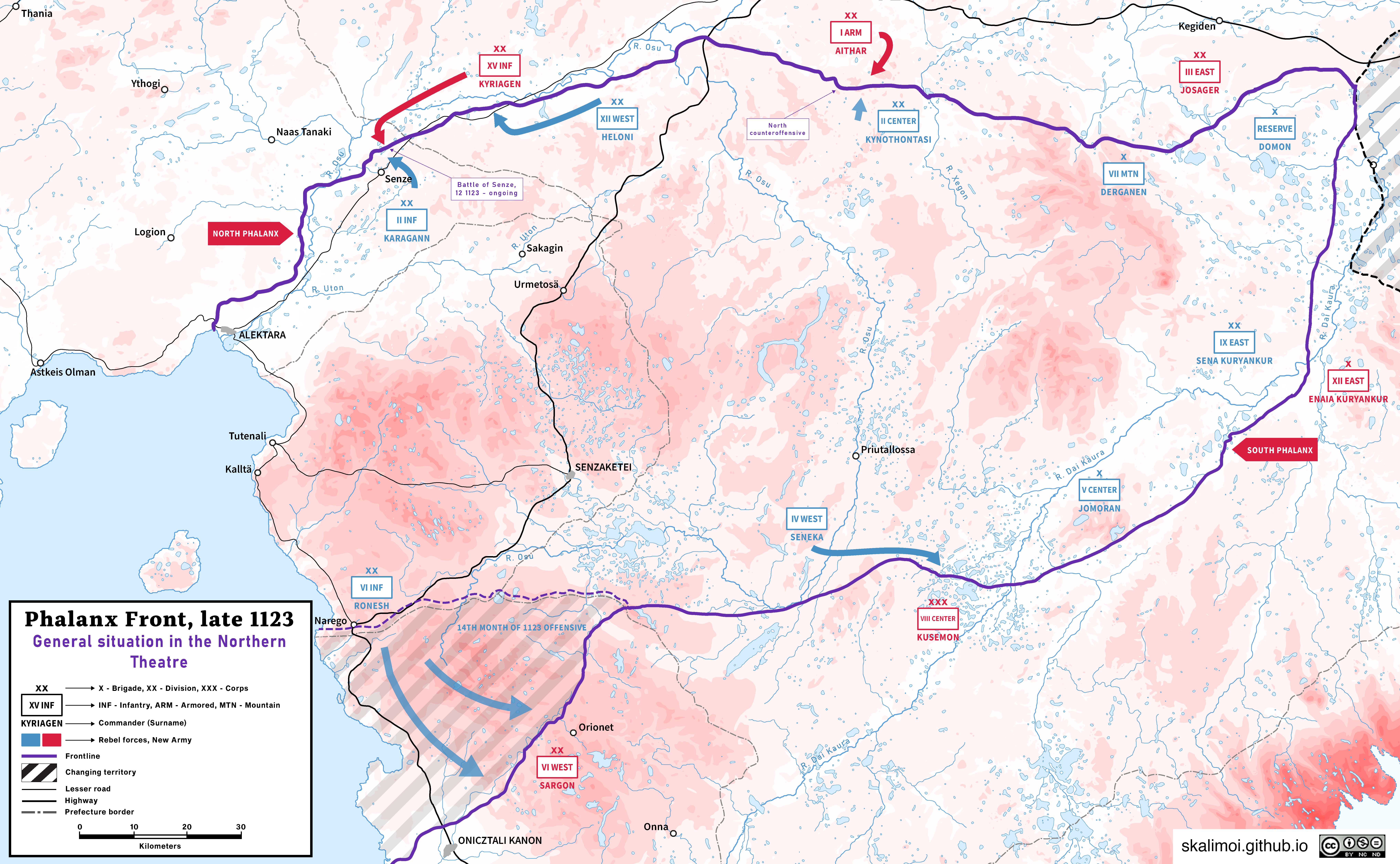The Northern Front in the year 1123
This is a map I’ve created for a D&D campaign based on my world - it takes place in a horrible civil war that has shaken Hellion for two years (as in 1123). Even though there are a lot of contenders in this war, the two main factions are the Rebel forces and the New Army.
The New Army is the state army for the dictatorship that has governed Hellion for the last thirty years - Wilhelm IV, the God Killer, seized all the political power a year into his reign. Yes, he’s the king too, but no king from this land had ever attempted to shatter the foundations of the State to that extent. Under Wilhem’s rule, the act of worshipping the gods was banned, as he claimed that the gods themselves were evil. Worshippers were killed on a daily basis, if not tortured first. Culture was deemed unworthy and changed to whatever Wilhelm wanted. A psychopathic and paranoid person, he molded the country to his own desires.
The Rebel Army is made of different factions and ideologies, and that is surely a problem that makes it difficult to organize and command. From democrats and anarchists to monarchists, anyone who opposes Wilhelm is welcome here… In theory. The dominant faction, however, defends the right of the princess Aria to occupy the throne of his father. It is said that she holds opposing ideas to Wilhelm, and that she is fighthing in the war as another foot soldier.
In popular Hellenian jargon, the frontlines are called phalanxes. The first recorded war in Hellenian soil took place in the so-called Phalanx valleys over a thousand years ago. You can look up those places in this base map.
In order to depict the different army structures, I learnt about the NATO Military Symbology that is widely used in military-oriented maps. To the knowledgeable eye, it will be clear that the symbols are not exactly the same - I decided to make a modified version for my world that shows misc information such as the structure number (the XVII division, etc) and the name of the commander. I think it’s interesting to give that information in order to make it more believable.
